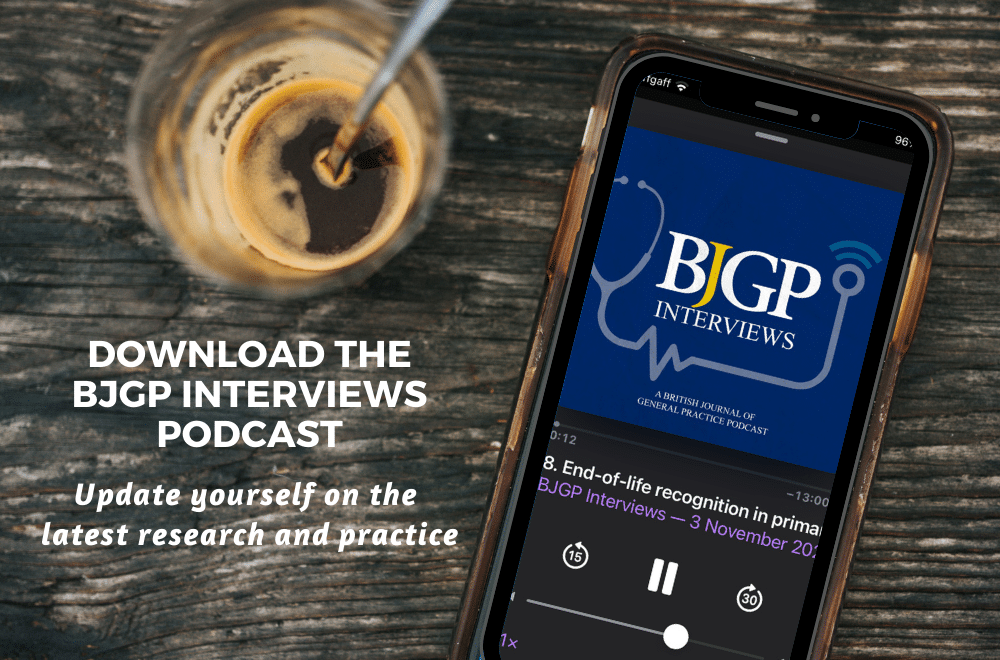 Katie Barnett is a Post CCT Fellow with Haxby Group Practice in York and an Honorary Clinical Fellow in the Department of Health Sciences at the University of York. She is on Twitter: @drkatiebarnett1 and blogs about wellbeing and fellowship at: Thefellowshipmonologues.wordpress.com
Katie Barnett is a Post CCT Fellow with Haxby Group Practice in York and an Honorary Clinical Fellow in the Department of Health Sciences at the University of York. She is on Twitter: @drkatiebarnett1 and blogs about wellbeing and fellowship at: Thefellowshipmonologues.wordpress.com
In primary care the majority of patients we see have some form of pain. Pain as a symptom is a poor prognostic indicator of pathology, but this does not correlate to how patients understand their bodies. If people have ‘severe’ pain they think ‘something must be wrong’, but the sensation of pain is determined less by the pathology and more by your genetic makeup, your previous experiences and your state of mind.
In my role as a GP I like to make people feel better. And the feel is a big part of this. A third of patients we treat have symptoms rather than disease processes.1 They feel poorly but I can’t find anything ‘wrong’. Because I like to make people feel better and I am trained in medicine, it often follows that I prescribe medication, despite not identifying a cause or understanding the mechanism behind that person’s pain. Recently there has been further evidence to the harms we do our patients when we take this approach to pain.
Pain, particularly persistent pain, needs a U turn in our management approach. There are two main barriers to this. The first is our patients; they have been conditioned to expect a treatment when they feel something is wrong. Their expectation is that a medication will make their pain go away and that the doctor can cure it. Ok, this is a huge generalisation, and certainly not all of my patients display this in extremis, but it feels to be there on some level most of the time.
The second barrier is the doctors; we need to please, to make things better, to fix.
30 years ago we were told we were not treating pain adequately.2 There was a push to give people more analgesia as ‘mean doctors’ were making people ‘suffer’ in pain without enough medication. So, armed with our opioids and gabapentinoids we went and we medicated. But peoples’ pain got worse. Not only did their symptoms not improve, people got sick. They developed autoimmune conditions, they became obese and developed diabetes, some even died as a consequence.3 There are multiple problems with these medications. Firstly they are hugely addictive; people build tolerance to them and they stop working (if they even ever truly worked in the first place), so we increase the dosage, over and over again, in order to try to fix. Secondly they cause a change in physiology, causing the disease processes listed above. Thirdly, we are not treating the reason they have pain.
30 years ago … there was a push to give people more analgesia …. but peoples’ pain got worse.
The cause of pain is often the elephant in the room, the untouched entity of a general dissatisfaction with life. We live in a world where we are always wanting more, where everyone is in a constant state of busyness, where we are running in fight or flight mode for most of the day, and via our social media we see others seemingly managing all of this with no issues and succeeding . All of this changes how we feel and experience pain, but will not be solved by adding an opiate. Chronic or persistent pain is our bodies telling us that something is wrong, but not in the way we often think. Often pain is a physical manifestation of the stress and tension that come from modern life, from not knowing how the bills will be paid, being in an unhappy relationship, feeling lonely and isolated etc.
The Faculty of Pain Medicine of the Royal College of Anaesthetists states that at a level above 120mg oral morphine equivalent a day, the risks of opiates increase so much that any potential benefits the patient may get are overridden by harms. Our practice is focussing attention initially on these patients, engaging with them to challenge their beliefs and expectations and reduce these medications to a safe level. Some patients love this approach. They hate being on medication and are grateful for the opportunity to explore their pain in other more holistic ways. Others are frustrated, feeling that we are dismissing their pain and taking away their only hope of improving their pain. Either way this is clearly very valuable and important work
In our current society we don’t like being uncomfortable, we want things fixed and we want it now.
Prevention is clearly better than cure, so how do we prevent people being put on the treadmill of increasing opiate doses in the first place? Some of this comes from an underlying educational process embedded in societal norms. In our current society we don’t like being uncomfortable, we want things fixed and we want it now. Exercising, putting yourself through pain and learning that pain is endurable is an excellent starting point. Is a “side stitch” when running not the perfect embodiment of the fact that levels of pain do not correlate to pathology? The key is learning to listen to our body’s cues, and not letting our minds override them because we are busy and stressed.
A good way to tune back into these cues is with meditation, or relaxation. Until people make time for themselves in their busy schedules we will continue to see patients with unexplainable persistent and debilitating pain limiting their quality of life and presenting to their GP frequently, seeking the help they so desperately need. More often than not, the benefits are to be found not in the quick fix of a medicine but in the long hard work of retraining people’s minds and looking for the multifaceted and complex underlying cause of their pain.
References:
- Rosendal M, et al. Symptoms as the main problem in primary care: A cross-sectional study of frequency and characteristics. Scand J Prim Health Care. June, 2015; 33(2): 91–99. doi: 10.3109/02813432.2015.1030166
- Marks RM, Sachar EJ. Undertreatment of medical inpatients with narcotic analgesics. Ann Intern Med 1973;78: 173-181
- https://www.england.nhs.uk/south/info-professional/safe-use-of-controlled-drugs/opioids/
Featured photo by Alina Grubnyak on Unsplash




